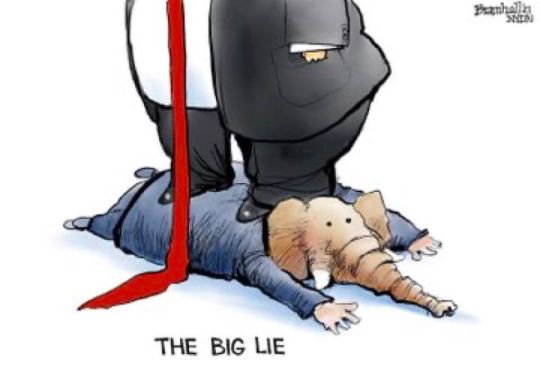#source 2: Andrew Roberts
Text
Teenage Napoleon being absolutely oblivious to the significance of the French Revolution in 1789 and how much it will change his life:


#it’s funny how calm doesn’t return until he’s in exile decades later#and at the time he literally has no idea that any of that will have anything to do with him#Napoleon#napoleon bonaparte#1789#source 1: New York Times#Duncan Kelly#source 2: Andrew Roberts#napoleon: a life#France#1700s#history#french revolution#frev#book#book pic#napoleonic#Bonaparte#joseph bonaparte#paoli#books#quote#quotes#book pics#Corsica#text post#lol
105 notes
·
View notes
Text
Franklin's lost expedition crew
I was looking at posts about AMC's The Terror and I kept getting confused by the use of first names, so I wanted to see how many of the characters had the same names. Arranging the crew in alphabetical order, I got:
1 x Abraham (Seeley)
4 x Alexander (Berry, McDonald, Paterson, Wilson)
5 x Charles (Best, Coombs, Des Voeux, Johnson, Osmer)
1 x Cornelius (Hickey)
2 x Daniel (Arthur, Bryant)
3 x David (Leys, Macdonald, Young) + Bonus: Bryant in the show but most historical sources I found list him as Daniel
1 x Edmund (Hoar)
3 x Edward (Couch, Genge, Little)
2 x Edwin (Helpman, Lawrence)
3 x Francis (Crozier, Dunn, Pocock)
1 x Frederick (Hornby) + Bonus: Des Voeux, whom I have seen referred to as Frederick rather than Charles on occasion
6 x George (Cann, Chambers, Hodgson, Kinnaird, Thompson, Williams)
1 x Gillies (MacBean)
1 x Graham (Gore)
7 x Henry/Harry (Collins, Goodsir, Le Vesconte, Lloyd, Peglar, Sait, Wilkes)
10 x James (Brown, Daly, Elliot, Fairholme, Fitzjames, Hart, Reid, Ridgen, Thompson, Walker) + Bonus: Ross, who was not part of the expedition but appears in the show
23 x John (Bailey, Bates, Bridgens, Brown, Cowie, Diggle, Downing, Franklin, Gregory, Hammond, Handford, Hartnell, Irving, Kenley, Lane, Morfin, Murray, Peddie, Strickland, Sullivan, Torrington, Weekes, Wilson)
2 x Joseph (Andrews, Healey)
1 x Josephus (Geater)
1 x Luke (Smith)
1 x Magnus (Manson)
1 x Philip (Reddington)
1 x Reuben (Male)
2 x Richard (Aylmore, Wall)
8 x Robert (Carr, Ferrier, Golding, Hopcraft, Johns, Sargent, Sinclair, Thomas)
3 x Samuel (Brown, Crispe, Honey)
1 x Solomon (Tozer)
16 x Thomas (Armitage, Blanky, Burt, Darlington, Evans, Farr, Hartnell, Honey, Johnson, Jopson, McConvey, Plater, Tadman, Terry, Watson, Work)
22 x William (Aitken, Bell, Braine, Clossan, Fowler, Gibson, Goddard, Heather, Hedges, Jerry, Johnson, Mark, Orren, Pilkington, Read, Rhodes, Shanks, Sims, Sinclair, Smith, Strong, Wentzall)
#i saw the 23 johns coming but not the 22 williams#there may be a mistake somewhere but that was a lot of names#amc the terror#the terror#terrorposting
90 notes
·
View notes
Text
STS-400: The planned (if needed) rescue of STS-125

Unofficial crew patch *

On LC-39A STS-125 Atlantis (left) and on LC-39B is STS-400 Endeavour (right).
In the wake of the Columbia Tragedy, NASA prepared several contingency missions in the event a shuttle could not return safely. Most of the shuttle missions post STS-107, involved the construction/support of the International Space Station. If there were any instances where the shuttle was deemed unfit to return safely, the crew would stay on the ISS until a relief shuttle could be sent. However, STS-125 Atlantis was to service the Hubble Space Telescope and was not on the same orbital plane as the ISS. The Atlantis wouldn't have enough fuel to reach the station, so another Shuttle (Endeavour) was kept on standby on LC-39B. STS-400 would have been crewed by Christopher Ferguson, Eric A. Boe, Robert S. Kimbrough and Stephen G. Bowen.

On the first day, the crew of Atlantis would use the Canadarm to inspect the bottom of the shuttle for damage to the Thermal Protection System. Had there been any damage deemed unrepairable, the plan was to launch Endeavour 5 days later. Atlantis would be put into powered-down mode to conserve power and consumables.


Endeavour will have Altitude Control with Atlantis serving as a Micro-Meteoroid Orbiting Debris shield.
"On flight day two, Endeavour would have performed the rendezvous and grapple with Atlantis."



Crew locations during EVA-1
"On flight day three, the first EVA would have been performed. During the first EVA, Megan McArthur, Andrew Feustel and John Grunsfeld would have set up a tether between the airlocks. They would have also transferred a large size Extravehicular Mobility Unit (EMU) and, after McArthur had repressurized, transferred McArthur's EMU back to Atlantis. Afterwards they would have repressurized on Endeavour, ending flight day two activities."


Crew locations during EVA-2


Crew locations during EVA-3
"The final two EVA were planned for flight day three. During the first, Grunsfeld would have depressurized on Endeavour in order to assist Gregory Johnson and Michael Massimino in transferring an EMU to Atlantis. He and Johnson would then repressurize on Endeavour, and Massimino would have gone back to Atlantis. He, along with Scott Altman and Michael Good would have taken the rest of the equipment and themselves to Endeavour during the final EVA. They would have been standing by in case the RMS system should malfunction. The damaged orbiter would have been commanded by the ground to deorbit and go through landing procedures over the Pacific, with the impact area being north of Hawaii. On flight day five, Endeavour would have had a full heat shield inspection, and land on flight day eight."
Information from Wikipedia link

STS-400 Middeck Seating
The additional crew members on Endeavour would have been accommodated via additional seats installed on the middeck. The autopilot onboard Atlantis would be used to de-orbit the orbiter tail first, to destroy it over a region north of Hawaii, in the Pacific Ocean.

Another unofficial crew patch.

View from LC-39B of the launch of STS-125 Atlantis on May 11, 2009. This was the fifth and final Space Shuttle mission to the Hubble Space Telescope.
Fortunately, STS-400 was not needed and Endeavour was returned to the VAB from LC-39B for STS-127.
* "As a contingency mission, STS-400 was not given official support by NASA for the production of a crew patch or emblem. However this artwork was created for use by the mission team as an unofficial emblem by Mike Okuda [the same person who worked on Star Trek and most of the LCARS], who also illustrated the official patch of STS-125, the flight to be rescued by STS-400."
Date: September 9, 2008
source, source, source, source, source, source, source, source, source, source, source, source, source , source
#STS-400#STS-125#Space Shuttle Atlantis#Atlantis#OV-104#Space Shuttle#Space Shuttle Endeavour#Endeavour#OV-105#Orbiter#NASA#Space Shuttle Program#September#2008#rescue#my post
129 notes
·
View notes
Text













St Andrews CathedraL
The remains of St Andrews Cathedral, which was Scotland’s largest cathedral and most magnificent church, show how impressive it used to be.
St Rule’s Church, (the remains are seen in the pics, the square tower beside the tree) was likely built around 1130, as the first place of worship in Scotland for the newly arrived Augustinian canons. This Continental reformed order supplanted the existing clergy.
The 33m tall St Rule’s Tower may have been a beacon for pilgrims heading for the shrine of St Andrew.
The cathedral was begun in 1160–2 by Bishop Arnold. Work continued over the next 150 years, but was stalled by a storm in 1272, which blew down the west front, and by the first War of Independence against England.
When the cathedral was finally dedicated in 1318 – in the presence of Robert the Bruce, by then king – it was by far the largest church in Scotland. So it was fitting that St Rule’s became the headquarters of the Scottish Church.
In June 1559 during the Reformation, a Protestant mob incited by the preaching of John Knox ransacked the cathedral; the interior of the building was destroyed. The cathedral fell into decline following the attack and became a source of building material for the town.
45 notes
·
View notes
Text

Mary I's Fight For The Throne
13th March 1553 - Mary writes to her cousin, Charles V
Sire:
The opportunity of a safe and reliable messenger having presented itself, I have dared, however unworthy, to write this short letter to your Majesty. I beseech you, as you have shown yourself in the past and even unto this day to be my help and refuge, nay, my second spiritual father, so to continue in your great goodness and virtue towards me, that through you I may obtain that which for nearly two years past has been denied me. I hope your Majesty may remember the numerous requests proffered by your ambassador to the King, my brother's, Council to grant me permission to observe the ancient religion, according to the promise made after the death of the late King, my father, whom God shrive! Nevertheless, no good results have come of them, and therefore I now make so bold as to ask your Majesty once more, with all humility, that you may be pleased to give fresh orders to your ambassador to repeat his requests to the same effect; or at least, when a season shall appear more propitious in your Majesty's eyes, may he by all possible means try to obtain that the hearing of mass in secret may be permitted and granted to me. I remit myself entirely to your Majesty's prudence and discretion; and I shall be all the more obliged as too many obligations bind me already to you. I will pray God, while I have life, to grant the fulfilment of your Majesty's high, noble and virtuous desires, with health and prosperity.
Beaulieu, 13 March, 1553. 1
It can be assumed this letter is in response to her servant Francis Englefield being arrested once more. On the 21st February, the Privy Council, including John Dudley, Duke of Northumberland and Thomas Cranmer, Archbishop of Canterbury, note in their meeting "a letter of appearance [summons] to Mr Inglefelde". 2
Englefield's actions are not mentioned throughout the following summer, with contemporary chronicler Robert Wingfield recording that in late July "two excellent knights of no small worth came to the queen on their release from custody, for they had not only been '[imprisoned] but had suffered many other indignities because of their unswerving loyalty to their queen: Anthony Browne [...] and Francis Englefield." 3
Meanwhile...
On the 18th March, Andrew Dudley returns to London having been an ambassador at the Holy Roman Emperor's court in Brussels. 4
Englishmen fit out 3 sea vessels to go on a voyage of discovery. 5
Sources:
1. Spanish State Papers, 13th March 1553
2. Acts of the Privy Council, 21st February 1553
3. Vita Mariae Angliae Reginae of Robert Wingfield
4. Spanish State Papers, 21st February 1553
5. Spanish State Papers, 7th March 1553
15 notes
·
View notes
Text
A list of season 2 cast and crew members, confirmed and speculated
I will try and keep this updated
Not counting the obvious ones
Please note that this is a list of both cast and crew members, so PAs and such are also included and not just actors
sorry in advance that 90% of my sources come from instagram
A
Aaron Morton (Camera) - he’s listed on the very last picture as the camera-man
Adam Stein (Writer)
Alan F. (English solider)
Alexandria S.
Alistair Gregory - from this tweet so uncertain, but followed me back on my bts instagram account so seems to have some interest in ofmd
Amy Tunnicliffe
Amanda M. (Wedding guest)
Andrew DeYoung (Director) - I don't remember if there was any other reason than the fact that he was in Aotearoa during filming
Andy Rydzewksi (Cinematographer)
B
Brian Badie (Hairstylist)
Bronson Pinchot ("Torturer")
Bryn Seager - I don't remember why but I follow him
Bryony Matthew (Food stylist)
C
Cora Montalban (Makeup and/or hairstylist) - I believe she was tagged in an instagram story once, and she's followed by a ton of cast and crew members
D
Daniel Fernandez (Spanish priest)
David G. (Stand in)
Dennis Bailey (Hairstylist) - Leslie revealed that he's there.
Don A. (Swampy Town folk)
E
Eliza Cossio (Writer)
Erroll Shand (Prince Ricky)
F
Fernando Frias (Director)
G
Grant Lobban
Gypsy Taylor (Costume designer)
H
Haroun Barazanchi - I'm gonna be honest, I have no memory of why I suspect this guy will be working on season 2, but I follow him hgjfdks
I-J
Jaden McLeod
Jason Samoa, possibly spotted on location
Jemaine Clement, pretty sure this is only based on his friendship with Rhys and Taika tbh
Jes Tom (Writer)
Jessica Lee Hunt (Makeup artist) - followed by a ton of crew and cast members and I believe she's been tagged in instagram stories and such
John Mahone (Writer)
Jono Capel-Baker (Groom)
Jonno Roberts didn't get the role from his audition, but could still have gotten a different role - hung out with Ruibo
K
Karl L. (Action extra)
Kate Fu
Kathleen Zyka Smith ("Red Flag")
Kosuke Iijima (Fabricator/Sculptor?) - due to interaction on this post
Kris Gillan (Fabricator/Sculptor)
Kura Forrester - followed by quite a few cast and crew members, but I don't remember if there was anything else to it
L
Laura Stables (SFX makeup artist)
Leanne - followed by cast and crew
Lee Tuson
Leslie Jones (Spanish Jackie) - she's spoiled this so many times, but gjfhdks
Leyla - followed by a lot of cast and crew members, don't remember if there was more to it than that
Luke V. (Stand in)
M
Ma Christina C. ("Red Flag")
Madeleine Sami (Archie)
Maddie Roche (PA) - read the tags idk lmao
Maddy Powell - this double rainbow photo is for sure from the first day of filming and nathan commented on her post
Maggie Philips (Music supervisor)
Mark Black (Henchman)
Mark Mitchinson (Hornigold)
Martin D. (Wedding guest)
Megan Vertelle (Set decorator)
Mike Berlucchi (Cinematographer)
N
Nareemun S. (Stand in)
Nat Van Halle - Has been hanging out on set with crew and cast
Natalie Torres (Writer)
Nathan Foad (Lucius)
Nathaniel Goodman - listed as camera-man
Nicola Dove (Photographer) - I'm guessing she'll be the season 2 version of Aaron Epstein
O-P
Paul Murphy (Director)
Q-R
Ra Vincent (Production designer) - He's the one in a white t-shirt and sunglasses or smth on his head
Rachel Forman - followed by a lot of cast and crew (including taika, nathan, madeleine, alex etc.) and Fernando made a post saying goodbye to Aoteroa, and she commented and he said he would miss her
Rachel House - Suspected due to her hanging out with cast and crew, but could be nothing
Richard B. ("Republic of Pirates")
Ringo R. ("Republic of Pirates")
Rory Davis - followed by cast and crew
Ruibo Qian
S
Sha M. ("Republic of Pirates")
Simone Nathan (Writer)
T
Tammy Davis - pretty sure it's just based off of this post which could be nothing
Tara Lauren (Makeup artist)
Tenesse Murfitt (Hairstylist) - followed by a ton of cast and crew members, and I believe she's been tagged in instagram stories
Tino L. (Stand in)
Toa Paranihi - I honestly don't remember why this was speculated or possibly confirmed, but I follow him on instagram and so do a couple of the cast and crew members
Ty Evander
U-V
Vanessa Vandy (Cinematopgrapher) - don't remember why i suspect her, but i follow her
W
Will Giles (Set designer)
X-Z
Zach Douglas
Zackery Alexander Stephans (Writer)
Zak Enayat - he has just been very openly working on the show, and is followed by cast and crew members
Zayre Ferrer (Writer)
#ofmd#our flag means death#ofmd spoilers#ofmd s2#crew list#hopefully i didn't forget anyone but lmk if i did
74 notes
·
View notes
Text
Team USA: 2023 ISU Championships
World Championships
Men: Ilia Malinin, Jason Brown, Andrew Torgashev* (alt: Camden Pulkinen, Maxim Naumov, Jimmy Ma)
Women: Isabeau Levito, Bradie Tennell, Amber Glenn (alt: Starr Andrews, Lindsay Thorngren, Ava Marie Ziegler)
Pairs: Knierim/Frazier, Chan/Howe, Kam/O’Shea (alt: Smirnova/Siianytsia, Plazas/Fernandez, McBeath/Bartholomay)
Ice Dance: Chock/Bates, Hawayek/Baker, Green/Parsons (alt: Carreira/Ponomarenko, Zingas/Kolesnik, Bratti/Somerville)
Four Continents Championships
Men: Maxim Naumov, Jimmy Ma, Liam Kapeikis (alt: Tomoki Hiwatashi, Yaroslav Paniot, Samuel Mindra)
Women: Isabeau Levito, Bradie Tennell, Amber Glenn (alt: Starr Andrews, Lindsay Thorngren, Gracie Gold)
Pairs: Chan/Howe, Kam/O’Shea, Plazas/Fernandez (alt: McBeath/Bartholomay, Mokhova/Mokhov)
Ice Dance: Chock/Bates, Green/Parsons, Carreira/Ponomarenko (alt: Zingas/Kolesnik, Bratti/Somerville, Pate/Bye)
Junior World Championships
Men: Lucas Broussard, Daniel Martynov, Robert Yampolsky (alt: Michael Xie, Jacob Sanchez, Joseph Klein)
Women: Josephine Lee, Soho Lee, Clare Seo (alt: Ava Ziegler, Mia Kalin, Elyce Lin-Gracey)
Pairs: Baram/Tioumentsev, Williams/Lewer* (alt: Murray/Gillette*)
Ice Dance: Neset/Markelov, Carhart/Horovyi, Hauer/Starr (alt: Pham/Rogers, Peal/Peal, Bland/Sperry)
*Need TES minimums
Sources: 1, 2, 3, 4
#team usa#figure skating#worlds#worlds 2023#4CC#4CC 2023#jr worlds#jr worlds 2023#isu championships#season: 2022 2023#events
45 notes
·
View notes
Text
There are three things that keep us alive: breathing, eating, sleeping. And yet we don't learn how to improve those necessary areas of life that will harm you if you lack in them.
Breathing
Breathe out your nose. The slower you breathe the better you are. Ideally you would breathe somewhere from 6-12 breathes a minute. The higher the worse. Ask people if you snore and if the answer is yes get a sleep test and be prepared to wear a CPAP machine or find an alternative solution so your breathing isn't disturbed during sleep.
Diet
Eat foods that:
1. Feed the gut (foods with fiber get digested slower which means more are absorbed by your microbiome. Which means you absorb less calories from those foods)
2. Protect the liver
3. Support the brain (omega 3, folic acid, creatine, fish oil, etc)
Reduce foods that have "added included sugars". This is harder than it sounds in our current world. The leading expert in this field says somewhere between 10-15 grams of added sugar is okay but any above that is harmful to the body in the way of producing a larger amount of insulin which is harmful to your cells. Calorie free sweeteners are better than sugar but still create a response for small amounts of insulin because your body expects sweet to mean sugar.
Sleep
3-2-1 rule:
No eating 3 hours before bed.
No drinking 2 hours before bed.
No overhead light or screens 1 hour before bed.
Combine those with going to bed and waking up at the same time ALL 7 DAYS A WEEK. (If you have a different sleep schedule for weekends prepare your Monday and maybe Tuesday to be your worst days of the week..)
Your body also needs to sit at a lower temperature to sleep. It requires somewhere between 1-2 degrees cooler than your waking temperature. Sleeping in cool environments helps this.
Seeing sunlight in the first hour of being awake helps regulate your circadian rhythm (Screens do not )
It's ideal to wait 1.5 hours before digesting caffeine as it doesn't do as much pre cortisol spike. Your cortisol naturally spikes in the first two hours of being awake and slowly goes down all day. The exception is with greater depression you have a spike between 6-9pm. No caffeine 8 hours before bed.
Sources
I learned this information via experts in each field (or for breathing a journalist who investigated breathing science)
Breath by James Nestor (book)
Why we sleep by Matthew Walker (book)
And for food I listened to the Andrew huberman podcast with the episode that had Robert Lustig (podcast)
Also I barely follow these rules. None of us are going to be perfect. It's just helpful to know this stuff. It helps explain bad days. It helps you take care of yourself better.
3 notes
·
View notes
Text

Footnotes - Part 1
I don't want to post the whole book without the footnotes; but it seems obnoxious to put the footnotes in a bunch of tags, so that's why I'm only tagging this with the book title.
[1] Sam Mbah and I.E. Igariway write that before colonial contact nearly all traditional African societies were “anarchies,” and they make a strong argument to this effect. The same could also be said of other continents. But as the author does not come from any of these societies, and since Western culture traditionally believes it has the right to represent other societies in self-serving ways, it is best to avoid such broad characterizations, while still endeavoring to learn from these examples.
[2] “The Really Really Free Market: Instituting the Gift Economy,” Rolling Thunder, No. 4 Spring 2007, p. 34.
[3] Robert K. Dentan, The Semai: A Nonviolent People of Malaya. New York: Holt, Rinehart and Winston, 1979, p. 48.
[4] Christopher Boehm, “Egalitarian Behavior and Reverse Dominance Hierarchy,” Current Anthropology, Vol. 34, No. 3, June 1993.
[5] Amy Goodman, “Louisiana Official: Federal Gov’t Abandoned New Orleans,” Democracy Now, September 7, 2005. Fox News, CNN, and The New York Times all falsely reported murders and roving gangs of rapists in the Superdome, where refugees gathered during the storm. (Aaron Kinney, “Hurricane Horror Stories,” Salon.com)
[6] Jesse Walker (“Nightmare in New Orleans: Do disasters destroy social cooperation?” Reason Online, September 7, 2005) cites the studies of sociologist E.L. Quarantelli, who has found that “After the cataclysm, social bonds will strengthen, volunteerism will explode, violence will be rare...”
[7] Roger M. Keesing, Andrew J. Strathern, Cultural Anthropology: A Contemporary Perspective, 3rd Edition, New York: Harcourt Brace & Company, 1998, p.83.
[8] Judith Van Allen “Sitting On a Man”: Colonialism and the Lost Political Institutions of Igbo Women.” Canadian Journal of African Studies. Vol. ii, 1972, pp. 211–219.
[9] Johan M.G. van der Dennen, “Ritualized ‘Primitive’ Warfare and Rituals in War: Phenocopy, Homology, or...?” rechten.eldoc.ub.rug.nl Among other examples, van der Dennen cites the New Guinea highlanders, among whom warring bands would face off, yell insults, and shoot arrows that did not have feathers, and thus could not be aimed, while another band on the sidelines would yell that it was wrong for brothers to fight, and attempt to calm the situation before blood was shed. The original source for this account is Rappaport, R.A. (1968), Pigs for the Ancestors: Ritual in the Ecology of a New Guinea People. New Haven: Yale University Press.
[10] “The Aims and Means of the Catholic Worker,” The Catholic Worker, May 2008.
[11] Graham Kemp and Douglas P. Fry (eds.), Keeping the Peace: Conflict Resolution and Peaceful Societies around the World, New York: Routledge, 2004. Semai murder rate, p. 191, other murder rates p. 149. The low Norwegian murder rate shows that industrial societies can also be peaceful. It should be noted that Norway has one of the lowest wealth gaps of any capitalist country, and also a low reliance on police and prisons. The majority of civil disputes and many criminal cases in Norway are settled through mediation (p. 163).
[12] Robert K. Dentan, The Semai: A Nonviolent People of Malaya. New York: Holt, Rinehart and Winston, 1979, p. 59.
[13] Dmitri M. Bondarenko and Andrey V. Korotayev, Civilizational Models of Politogenesis, Moscow: Russian Academy of Sciences, 2000.
[14] Harold Barclay, People Without Government: An Anthropology of Anarchy, London: Kahn and Averill, 1982, p. 98.
[15] Christopher Boehm, “Egalitarian Behavior and Reverse Dominance Hierarchy,” Current Anthropology, Vol. 34, No. 3, June 1993.
[16] The victories of the movement and the failure of the IMF and World Bank are argued by David Graeber in “The Shock of Victory,” Rolling Thunder no. 5, Spring 2008.
[17] The paragraphs regarding the Hill People and Southeast Asia are based on James C. Scott, “Civilizations Can’t Climb Hills: A Political History of Statelessness in Southeast Asia,” lecture at Brown University, Providence, Rhode Island, February 2, 2005.
[18] Alan MacSimoin, “The Korean Anarchist Movement,” a talk in Dublin, September 1991. MacSimoin references Ha Ki-Rak, A History of the Korean Anarchist Movement, 1986.
[19] Sam Dolgoff, The Anarchist Collectives, New York: Free Life Editions, 1974, p. 73.
[20] Ditto, p. 73. The statistic on Graus comes from p. 140.
[21] Gaston Leval, Collectives in the Spanish Revolution, London: Freedom Press, 1975, pp. 206–207.
[22] Sam Dolgoff, The Anarchist Collectives, New York: Free Life Editions, 1974, p. 113.
[23] The criticisms of the this and the following paragraphs are based on an interview with Marcello, “Criticisms of the MST,” February 17, 2009, Barcelona.
[24] Wikipedia, “Asamblea Popular de los Pueblos de Oaxaca,” [viewed November 6, 2006]
[25] Diana Denham and C.A.S.A. Collective (eds.), Teaching Rebellion: Stories from the Grassroots Mobilization in Oaxaca, Oakland: PM Press, 2008, interview with Marcos.
[26] Ditto, interview with Adán.
[27] Melford E. Spiro, Kibbutz: Venture in Utopia, New York: Schocken Books, 1963, pp. 90–91.
[28] Robert Fernea, “Putting a Stone in the Middle: the Nubians of Northern Africa,” in Graham Kemp and Douglas P. Fry (eds.), Keeping the Peace: Conflict Resolution and Peaceful Societies around the World, New York: Routledge, 2004, p. 111.
[29] Alice Schlegel, “Contentious But Not Violent: The Hopi of Northern Arizona” in Graham Kemp and Douglas P. Fry (eds.), Keeping the Peace: Conflict Resolution and Peaceful Societies around the World, New York: Routledge, 2004.
[30] Melford E. Spiro, Kibbutz: Venture in Utopia, New York: Schocken Books, 1963, pp. 83–85.
[31] Gemma Aguilar, “Els okupes fan la feina que oblida el Districte,” Avui, Saturday 15 December 2007, p. 43.
[32] Natasha Gordon and Paul Chatterton, Taking Back Control: A Journey through Argentina’s Popular Uprising, Leeds (UK): University of Leeds, 2004, p. 45.
[33] William Foote Whyte and Kathleen King Whyte, Making Mondragon: The Growth and Dynamics of the Worker Cooperative Complex, Ithaca, New York: ILR Press, 1988, p. 5.
[34] Malcolm Gladwell, The Tipping Point: How Little Things Can Make a Big Difference. New York: Little, Brown, and Company, 2002, pp. 183–187.
[35] Michael Albert, Parecon: Life After Capitalism, New York: Verso, 2003, pp. 104–105.
[36] Diana Denham and C.A.S.A. Collective (eds.), Teaching Rebellion: Stories from the Grassroots Mobilization in Oaxaca, Oakland: PM Press, 2008, interview with Tonia.
[37] Ditto, interview with Francisco.
[38] Cahal Milmo, “On the Barricades: Trouble in a Hippie Paradise,” The Independent, May 31, 2007.
[39] Technically, human elders provide a reproductive function because they store obscure types of information like how to survive natural disasters that only occur once every several generations, and they can also serve to increase social cohesion by increasing the amount of living relations within the community — for example the number of people with the same grandparents is much larger than the number of people with the same parents. However, these survival benefits are not immediately obvious and there is no evidence of any human society making such calculations when deciding whether or not to feed their toothless grannies. In other words, the fact that we avail ourselves of the benefits of the elderly is a reflection of our habitual social generosity.
[40] Gaston Leval, Collectives in the Spanish Revolution, London: Freedom Press, 1975, p. 270.
[41] Neille Ilel, “A Healthy Dose of Anarchy: After Katrina, nontraditional, decentralized relief steps in where big government and big charity failed,” Reason Magazine, December 2006.
[42] Albany Free School website (viewed November 24, 2006) www.albanyfreeschool.com
[43] Natasha Gordon and Paul Chatterton, Taking Back Control: A Journey through Argentina’s Popular Uprising, Leeds (UK): University of Leeds, 2004, pp. 43–44.
[44] See chapter 5 in Uri Gordon, Anarchy Alive! Anti-authoritarian Politics from Practice to Theory, London: Pluto Press, 2008.
[45] The description of the New Guinea highlanders in Jared Diamond’s book (Collapse: How Societies Choose to Fail or Succeed, New York, Viking, 2005), particularly the portrayal of their curiosity, wit, and humanity, does a great service to dispelling the lingering imagery of so-called primitive peoples as grunting apes or noble savages.
[46] “Wikipedia survives research test,” BBC News 15 December 2005 news.bbc.co.uk
[47] “Editorial administration, oversight and management” Wikipedia, en.wikipedia.org
[48] Patrick Fleuret, “The Social Organization of Water Control in the Taita Hills, Kenya,” American Ethnologist, Vol. 12, 1985.
[49] Sam Dolgoff, The Anarchist Collectives, New York: Free Life Editions, 1974, p. 66.
[50] Ditto, p. 88.
[51] All the quotes and statistics in the paragraph come from Sam Dolgoff, The Anarchist Collectives, New York: Free Life Editions, 1974, pp. 88–92.
[52] Ditto, pp. 75–76
[53] George Katsiaficas, The Subversion of Politics: European Autonomous Social Movements and the Decolonization of Everyday Life. Oakland: AK Press, 2006, pp. 84–85
[54] The Stonehenge Free Festivals, 1972–1985. www.ukrockfestivals.com Viewed 8 May 2008.
[55] The Curious George Brigade, Anarchy In the Age of Dinosaurs, CrimethInc. 2003, pp. 106–120. The statistic from Ghana appears on page 115.
[56] Emily Achtenberg, “Community Organizing and Rebellion: Neighborhood Councils in El Alto, Bolivia,” Progressive Planning, No.172, Summer 2007.
[57] Although the author of this piece chooses the term government, the underlying concept should not be given parity with what in Western society is considered to be government. In the ayllu tradition, leadership is not a privileged social position or a position of command, but a form of “community service.”
[58] Emily Achtenberg, “Community Organizing and Rebellion: Neighborhood Councils in El Alto, Bolivia,” Progressive Planning, No.172, Summer 2007.
[59] All the quotes on Symphony Way come from Daria Zelenova, “Anti-Eviction Struggle of the Squatters Communities in Contemporary South Africa,” paper presented at the conference “Hierarchy and Power in the History of Civilizations,” at the Russian Academy of Sciences, Moscow, June 2009.
[60] Oxfam America, “Havana’s Green Revelation,” www.oxfamamerica.org [viewed December 5, 2005]
[61] Sam Dolgoff, The Anarchist Collectives, New York: Free Life Editions, 1974, pp. 163–164.
[62] This theory for the fate of Easter Island is convincingly argued in Jared Diamond, Collapse: How Societies Choose to Fail or Succeed, New York, Viking, 2005.
[63] Eric Alden Smith, Mark Wishnie, “Conservation and Subsistence in Small-Scale Societies,” Annual Review of Anthropology, Vol. 29, 2000, pp. 493–524. “As population density and political centralization increases, communities may exceed the size and homogeneity needed for endogenous systems of communal management” (p. 505). The authors also pointed out that colonial and postcolonial interference ended many systems of communal resource management. Bonnie Anna Nardi, “Modes of Explanation in Anthropological Population Theory: Biological Determinism vs. Self-Regulation in Studies of Population Growth in Third World Countries,” American Anthropologist, vol. 83, 1981. Nardi points out that as decision-making, society, and identity go from small-scale to a national scale, fertility control loses its effectiveness (p. 40).
[64] Bruce Stewart, quoted in Derrick Jensen, A Language Older Than Words, White River Junction, Vermont: Chelsea Green Publishing Company, 2000, p.162.
[65] Jared Diamond, Collapse: how societies choose to fail or succeed, New York: Viking, 2005, pp. 292–293
[66] For example, the United States and Western Europe, responsible for most of the world’s greenhouse gases, are currently forcing hundreds of millions of people to die every year rather than curtailing their car cultures and reducing their emissions.
[67] The ten percent figure and mention of the two attacks in Germany come from Nathaniel C. Nash, “Oil Companies Face Boycott Over Sinking of Rig,” The New York Times, June 17, 1995.
[68] Jared Diamond, Collapse: How Societies Choose to Fail or Succeed, New York: Viking, 2005, p. 277.
[69] H. Van Der Linden, “Een Nieuwe Overheidsinstelling: Het Waterschap circa 1100–1400” in D.P. Blok, Algemene Geschiednis der Nederlanden, deel III. Haarlem: Fibula van Dishoeck, 1982, p. 64. Author’s translation.
[70] This analysis is well documented by Kristian Williams in Our Enemies in Blue. Brooklyn: Soft Skull Press, 2004.
[71] In 2005, 5,734 workers were killed by traumatic injury on the job, and an estimated 50,000 to 60,000 died from occupational diseases, according to the AFL-CIO “Facts About Worker Safety and Health 2007.” www.aflcio.org
Of all the killings of workers by employer negligence between 1982 and 2002, fewer than 2000 were investigated by the government, and of these only 81 resulted in convictions and only 16 resulted in jailtime, though the maximum allowed sentence was six months, according to David Barstow, “U.S. Rarely Seeks Charges for Deaths in Workplace,” New York Times, December 22, 2003.
[72] These are widely available statistics from US Census bureau, Justice Department, independent researchers, Human Rights Watch, and other organizations. They can be found, for example, on drugwarfacts.org [viewed 30 December, 2009].
[73] Wikipedia “Seattle General Strike of 1919,” en.wikipedia.org [viewed 21 June 2007]. Print sources cited in this article include Jeremy Brecher, Strike! Revised Edition. South End Press, 1997; and Howard Zinn, A People’s History of the United States, Perrenial Classics Edition, 1999.
[74] Diana Denham and C.A.S.A. Collective (eds.), Teaching Rebellion: Stories from the Grassroots Mobilization in Oaxaca, Oakland: PM Press, 2008, interview with Cuatli.
[75] Alan Howard, “Restraint and Ritual Apology: the Rotumans of the South Pacific,” in Graham Kemp and Douglas P. Fry (eds.), Keeping the Peace: Conflict Resolution and Peaceful Societies around the World, New York: Routledge, 2004, p. 42.
[76] Both observer quotes from Jamie Bissonette, When the Prisoners Ran Walpole: a true story in the movement for prison abolition, Cambridge: South End Press, 2008, p. 160.
[77] One can’t help but compare this to the British spreading opium in China or the US government spreading whiskey among indigenous people and, later, heroin in ghettos.
[78] Natasha Gordon and Paul Chatterton, Taking Back Control: A Journey through Argentina’s Popular Uprising, Leeds (UK): University of Leeds, 2004, pp. 66–68.
[79] Graham Kemp and Douglas P. Fry (eds.), Keeping the Peace: Conflict Resolution and Peaceful Societies around the World, New York: Routledge, 2004, pp. 73–79. The cross-cultural study is M.H. Ross, The Culture of Conflict, New Haven: Yale University Press, 1993.
4 notes
·
View notes
Text
Films Watched in October 2022
Bodies Bodies Bodies | Halina Reijn | 2022
Swallow | Carlo Mirabella-Davis | 2019
Trouble Every Day | Claire Denis | 2001
The Scapegoat | Robert Hamer | 1959
The Creeping Flesh | Freddie Francis | 1973
Die, Monster, Die! | Daniel Haller | 1965
The Blackcoat's Daughter (AKA February) | Oz Perkins | 2015
Miss Leslie’s Dolls | Joseph G. Prieto | 1973
Gretel & Hansel | Oz Perkins | 2020
Frankenstein: The True Story Part 1 | Jack Smight | 1973
Frankenstein: The True Story Part 2 | Jack Smight | 1973
I Am The Pretty Thing That Lives In The House | Oz Perkins | 2016
The Fog | John Carpenter | 1980
Saturday the 14th | Howard R. Cohen | 1981
X | Ti West | 2022
Pearl | Ti West | 2022
Blueblood | Andrew Sinclair | 1974
Halloween Ends | David Gordon Green | 2022
The Curse of Frankenstein | Terence Fisher | 1957
The Revenge of Frankenstein | Terence Fisher | 1958
The Evil of Frankenstein | Freddie Francis | 1964
Frankenstein Created Woman | Terence Fisher | 1967
Frankenstein Must Be Destroyed | Terence Fisher | 1969
The Horror of Frankenstein | Jimmy Sangster | 1970
Frankenstein and the Monster from Hell | Terence Fisher | 1974
Children Shouldn't Play with Dead Things | Bob Clark | 1972
And Now the Screaming Starts! | Roy Ward Baker | 1973
Mockingbird Lane | Bryan Singer | 2012
Phantom of the Paradise | Brian De Palma | 1974
Bold = Top Ten
Some notes: Hey look at me watching films for a change! A slightly disorganised but mostly horror themed month ...mostly.
Frankenstein: The True Story* is a rediscovered fave, quite a nostalgic viewing really, and no doubt the source of my predilection for chokers. An attempt to make a "classy" version of the Frankenstein story but just as cheesy as the cheesiest Hammer movies in places - which of course led me to deciding to watch all the Hammer Frankensteins. A mixed bag to be sure but enjoyable on the whole.
Really enjoyed Oz Perkins’ three supernatural/horror movies. Gretel & Hansel was a bit “style over substance” but still I liked it! Blueblood was a peculiar movie! Don’t know really what to make of it but I’d buy a restored blu if someone like Indicator or BFI Flipside put it out!
Finished off with that old fave Phantom of the Paradise, though I don’t know what the rest of the family thought of it (for Halloween I’m always charged with finding something to watch that’s horror themed but not too scary or gory, PotP seemed a good choice)!
*It’s not a Top Eleven I just listed the two parts of Frankenstein: The True Story seperately for my qwn records because that’s how I watched it.
23 notes
·
View notes
Note
Hi! I was wondering is there an actual source stating that calling Napoléon "Buonaparte" was meant as derogatory? I've read here (https://mrodenberg.com/2012/09/13/bonaparte-or-buonaparte/) that on Saint-Helena, the British addressed him as that to undermine his legitimacy as French ruler. Also, I know of another historical figure, Prieur de la Côte-d'Or, who not being very fond of him used the same appellation when talking about Napoleon
Hey! Yes, it was definitely used in a derogatory way to delegitimize Napoleon’s rule by denying his frenchness. Napoleon’s brother, Louis, commented on this in his A Reply to Sir Walter Scott’s History of Napoleon in 1829:
Another visible object is, that of desiring to make Napoleon pass as a foreigner in France. In fact, if such were not the intentions of the author, why this obstinacy in writing the family name of Napoleon, Buonaparte, instead of Bonaparte, consecrated as it is by long habit? Certainly the letter O is not more or less noble or French than the letter U, but it is done to impress a foreign character upon Napoleon, and divide his glory from that of France.
The Italian nation is sufficiently glorious for one to be proud of belonging to it, especially of deriving one’s origin from this beautiful country; but when one has been born under the laws of France, grown up on its soil, with no other knowledge of foreign countries, even of beautiful Italy, than that gained with the victorious legions of France, it is rather too ridiculous to receive from an English author the certificate of a foreigner.
The name Buonaparte was being used by the coalitions before the St. Helena years, especially by the British, so there are quite a lot of examples.
To be clear, Buonaparte was Napoleon’s birth name and the name he preferred to go by for over 20 years. He changed his name during the French Revolution during a wave of name changes across France to more revolutionary and patriotic names. That being said, Bonaparte is already listed as his name on his baptism certificate* in 1771 (“Neapoleone Bonaparte”) when he was nearly 2 years old, which is 3 years into French rule of Corsica. On the same document, his father’s name is spelled as Buonaparte.
It’s a little complicated. The spelling of names weren’t very standardized and were subject to a lot of variation. But the usage of the name Buonaparte was definitely intentional among Napoleon’s enemies. You can tell pretty easily when someone is saying it in a bad faith manner.
From the historian Andrew Roberts (Napoleon: A Life):
For decades thereafter, British and Bourbon propagandists re-inserted the ‘u’ in order to emphasize Napoleon’s foreignness, such as in François-René de Chateaubriand’s snappily titled 1814 pamphlet Of Buonaparte and the Bourbons and the Necessity of Rallying Round our Legitimate Princes for the Happiness of France and that of Europe, in which he wrote: ‘No hope was left of finding among Frenchmen a man bold enough to dare to wear the crown of Louis XVI. A foreigner offered himself, and was accepted’ (Chateaubriand, Of Buonaparte p. 5). Even after the British royal family changed the name of their dynasty from Saxe-Coburg-Gotha to Windsor in 1917, some British historians still ridiculed Napoleon for dropping the ‘u’ from his surname.
It becomes obvious when people change how they refer to Napoleon depending on their current stance or relationship with him. For example, when France and Russia were allies, Tsar Alexander I calls him Napoleon or even the Emperor Napoleon. But when the alliances change and Napoleon is removed from power, Alexander referred to him as Buonaparte.
From the historian Marie-Pierre Rey (Alexander I):
Alexander’s use of the Corsican family name of Buonaparte is interesting, implying that for Alexander Napoléon was no longer emperor of the French — and not even French by nationality!
So there were two purposes to calling him Buonaparte: to accentuate his commoner origins as well as his foreignness in order to delegitimize his authority as head of state.
Thanks for the interesting question!
————
* (The baptism document can be found on Archives de la Corse-du-Sud -> Etat Civil -> Ajaccio -> 1771 -> Baptemes -> 6 MI 4/21)
#asks#my answers#Napoleon#napoleon bonaparte#buonaparte#napoleonic era#napoleonic#first french empire#french empire#Bonaparte#history#french revolution#Corsica#Ajaccio
39 notes
·
View notes
Text
Fuel’s Aflame
by wickedrum
Robin Wood never forgot his need for revenge, he only shelved it through a series of apocalyptic events.
Words: 5339, Chapters: 1/?, Language: English
Series: Part 2 of Ringverse
Fandoms: Buffy the Vampire Slayer (TV), Angel: the Series
Rating: Not Rated
Warnings: No Archive Warnings Apply
Categories: F/F, F/M
Characters: Spike (BtVS), Buffy Summers, Lorne | Krevlornswath, Angel (BtVS), Rupert Giles, Winifred "Fred" Burkle, Charles Gunn, Harmony Kendall, Daniel "Oz" Osbourne, Willow Rosenberg, Robert Dowling, Gwen Raiden, Dawn Summers, Xander Harris, Nefertiti of Egypt, Nostroyev, Prince of Lies, Drusilla (BtVS), Dracula (Buffy the Vampire Slayer), Alexandros III of Macedon | Alexander the Great, OCs, Milo of Croton, Caligula, Hannibal, Andrew Wells, Percy Shelley, Victor Hugo (1802-1885)
Relationships: Spike/Buffy Summers
Additional Tags: Faith/Robin Wood - past, San Francisco, Cleveland Hellmouth, San Francisco Police Department - Freeform, James Bond - Freeform, Watchers' Council (BtVS), Slayers, Poetry, Vampire Hunters, Dimension Travel, Roma | Rome, zompires, 70s, Berlin (City), cairo, Warsaw, Sickfic, Whump, Angst and Hurt/Comfort
source https://archiveofourown.org/works/47511895
2 notes
·
View notes
Photo

Bill Bramhall, New York Daily News :: [h/t Scott Horton]
* * * * *
Trump admits guilt. :: September 1, 2022
Robert B. Hubbell
It is becoming increasingly likely that Donald Trump will be indicted for espionage and obstruction of justice—largely because Trump continues to incriminate himself on his vanity media platform. Former Fox “news” commentator Judge Andrew Napolitano made that point in an op-ed in the Washington Times—which is traditionally a Trump-friendly source. (Don’t confuse the Washington Times with the Washington Post.) Napolitano wrote the following:
It gives me no joy to write this piece.
Even a cursory review of the redacted version of the [FBI] affidavit . . . reveals that he will soon be indicted by a federal grand jury for three crimes.
[By] misreading and underestimating the feds, Mr. Trump actually did them a favor. One of the elements that they must prove for any of the three crimes is that Mr. Trump knew that he had the documents. The favor he did was admit to that when he boasted that they were no longer classified.
Trump repeated that self-incriminating “favor” by complaining about the photo of documents seized at Mar-a-Lago, which were photographed on the carpeted floor in the room where they were seized. Trump whined that the FBI “took them out of cartons and spread them around on the carpet.” The statement admitted that he was aware that top secret documents remained at Mar-a-Lago “in cartons” after his lawyers certified that all such documents had been returned to the National Archives.
Before turning to legal developments, it is helpful to put Trump’s “de-classification” defense in perspective. Trump’s constitutional obligation as president was to “take Care that the Laws be faithfully executed” (Art 2, Sec. 3) and to “faithfully execute the Office of President,” (Art 2, Sec. 1). Thus, Trump’s obligation as president was to act in the interest of the United States in all things. The Constitution says so.
In deciding whether to declassify documents, Trump’s obligation to “faithfully execute” the laws regarding classification required him to provide notice to and seek input from the relevant intelligence agencies (to protect the national security of the U.S.). Trump did not have the power to declassify documents on a whim. Nor could he do so out of prurient interest or to protect himself from criminal prosecution or to make it easier for him to read the documents in the residential quarters of the White House.
Trump’s claim that he declassified documents simply because he felt like doing so is a damnable lie. But if he recklessly declassified documents, Trump was not acting as a president “taking care to faithfully execute the laws,” but as a rogue actor violating the spirit and the letter of the law to advance his personal interests. That is no defense to the three crimes being investigated by the DOJ. Indeed, his invocation of de-classification superpowers only proves his awareness of guilt and intent to violate the law.
The DOJ’s response to Trump’s request for appointment of a special master.
With the benefit of 24 hours to analyze the DOJ’s response to Trump’s request to appoint a special master, it is clear that Trump’s motion was a blunder of the highest order. For an excellent and detailed analysis of why that is so, I highly recommend Joyce Vance’s discussion on her Substack blog, Civil Discourse, “Trump in Trouble. As Vance explains, the DOJ lawyers are “glad Trump gave them the opportunity to set the record straight.”
Vance notes that the DOJ raised a serious obstacle to Trump’s request for relief: lack of standing:
[The] DOJ says Trump doesn’t have legal standing to ask the court to act because the documents aren’t his in the first place; they are presidential records that belong to the United States. “Because these records do not belong to Plaintiff, Rule 41(g) gives him no right to have them returned.”
And most damning, the DOJ response asserted that Trump actively concealed defense secrets after his lawyer certified that all such documents had been returned. Vance highlights the following statement in the DOJ’s response:
“The government also developed evidence that government records were likely concealed and removed from the Storage Room and that efforts were likely taken to obstruct the government’s investigation.”
Finally, Vance notes that the location of Trump’s passports in the same desk drawer that contained classified material “rather neatly link[s] the former president to that material.”
Trump is in trouble, indeed. Republicans are scrambling for talking points to defend Trump—but he keeps undermining their defenses. See Rolling Stone, MAGA Talking Points Grow Even More Absurd After Release of Classified Docs Pic. Some of Trump’s most ardent defenders suggested that the FBI planted the documents in the photo filed with its response. But Trump disproved that defense by asserting on his vanity media platform that he kept the stolen defense documents neatly packed in cartons! See Mediate, Trump Mocked For Confessing He Had Top Secret Documents.
What does this mean for Democrats? First, it provides a reasonable basis to believe that the DOJ will indict Trump. Andrew Napolitano believes an indictment is inevitable, and he is one of Trump’s most loyal supporters. Holding Trump accountable for any of his crimes will be a victory for the rule of law.
Second, it will keep Trump and the GOP off-balance during the run-up to the midterms—which can only be good for Democratic prospects.
Third, it may force a weakened Trump to declare for the presidency as a possible defense to conviction (via self-pardon). If that occurs, it will either clear the field of wannabe GOP contenders leaving a weakened Trump as the presumptive nominee, or flood the field with contenders who believe they can take down a weakened Trump. From a purely partisan standpoint, that can only be good for Democrats.
Trump’s potential indictment on espionage and obstruction of justice is a self-inflicted injury of monumental proportions. And if Trump’s public defense to this point is any indication, he will only make it worse for himself and his defenders as he desperately grasps for a defense that does not exist. As Dahlia Lithwick asks in Slate, Have the facts finally caught up to Donald Trump? In a memorable turn of phrase, Lithwick writes,
We’ve become so accustomed to the great greased watermelon that is the former president it’s impossible to imagine that, after escaping the clutches of the Mueller probe, two impeachment efforts, and a hailstorm of prosecutions in New York, he might finally be good and caught.
Trump is in trouble, indeed—and his inability to shut up is making life worse for himself and the GOP.
#TFG#stealing classified information#DOJ#Rule of Law#Bill Bramhall#NY Daily News#Robert B. Hubbell Newsletter#Classified Documents
9 notes
·
View notes
Note
top 5 favorite comic book character live action adaptations
aah, i love this question! i'm going to answer this by casting and/or character portrayal, regardless of how much i liked the end product as a whole:
1) andrew garfield as peter parker in the amazing spider-man (2012), the amazing spider-man 2 (2014), and spider-man no way home (2021); i think out of all the actors who have played him, andrew understands the character from the source material the best. his spider-like physicality in the role is so great, and he imbues peter with the panache right from the comics.
2) chris evans as steve rogers in the mcu; the writing may have been really inconsistent, but when it was on, it was on, and evans does a really good job of embodying steve.
3) so i'm going to give a two-way tie to this one; i enjoy the casting of both henry cavill (dceu) and tyler hoechlin (superman & lois) as clark kent. hoechlin's version has better writing, but man cavill deserved so much more than what he got. tbf i also liked brandon routh in superman returns. and i loved tom welling on smallville. and i loved christopher reeve in the ogs. honestly the only live action superman i don't like is dean cain lmao
4) jk simmons as j jonah jameson in the raimi spider-man films and more; literally THE best translation of a character from page to screen i swear.
5) robert pattinson as bruce wayne in the batman (2022); i know this movie just came out but, listen. he was incredible. this is THE best onscreen batman we've had in terms of the character and portrayal. so can't wait for more of him.
ask me my top 5 anything!
#asks#loisfreakinglane#top 5 meme#other honorable mentions:#charlie cox is a great matt murdock and vincent d'nofrio is a great kingpin and krysten ritter is a great jessica jones#REALLY love the casting of elodie yung as elektra and just wish they gave her better writing#i actually really love brie larson as carol danvers#and yeah rdj made tony stark likeable you can't really deny that
7 notes
·
View notes
Photo


robert kubica, sebastian vettel, and lucas di grassi celebrate on the podium, race two, macau - november 20, 2005
(source: 1 / 2 // photographer: andrew ferraro)
#likes are nice reblogs are better 😊#sebastian vettel#robert kubica#f1#formula 1#macau gp 2005#flashback fic ref#flashback fic ref 2005#macau#macau 2005#macau 05#macau2005#macau05#macau 2005 sunday#macau 2005 race 2
6 notes
·
View notes
Text

Attorney General Merrick Garland on Thursday held a belated press conference to explain that he had personally approved the FBI’s raid of Donald Trump’s Florida residence to seize documents deemed U.S. government property.
A clearly agitated and nervous Garland sought to exude confidence in the raid. He went on to heatedly defend the professionalism and integrity of the Justice Department and FBI.
But almost immediately after his sermon, the Justice Department and its affiliates were back to their usual selective leaking (“sources say” . . . “according to people familiar with the investigation”) to liberal newspapers.
In no time, the Washington Post claimed the raid was aimed at finding Trump Administration documents relating to “nuclear secrets.” The now-familiar desired effect was achieved. “Presidential historian” Michael Beschloss quickly tweeted a picture of Julius and Ethel Rosenberg, noting that in the past revealing such nuclear secrets had led to the death penalty. Former CIA Director Michael Hayden, previously known for comparing Trump’s border detention facilities to Auschwitz and falsely claiming the Hunter Biden laptop was Russian “disinformation,” replied: “Sounds about right.” That is, without any proof, it was legitimate to imagine that the former president of the United States, like the Rosenbergs, should be executed for passing nuclear secrets.
So, as intended, the Justice Department and FBI leaks touched off a round of intended liberal hysteria of the sort we saw during Special Counsel Robert Mueller’s investigation into alleged Russian collusion with Trump’s 2016 campaign aimed at disguising government misdeeds or overreach.
Sources Tell Us
Despite Garland’s pious assertions, we know the modus operandi of selective leaking from the career of Andrew McCabe. The disgraced former interim FBI director admitted to lying to federal investigators about his role in leaking to the Wall Street Journal. And the inspector general found McCabe lied on several other occasions about his efforts to leak to and massage the media. At this point, we should assume that “sources tell us” and “according to unnamed sources” are indications that the sources are Justice Department and FBI contacts who were given the green light to manipulate the news by their superiors.
Let’s put Garland’s decision to approve the raid on Mar-a-Lago in the context of the past seven years. The Justice Department and FBI in 2016 interfered in a presidential election in two major ways: They exonerated Hillary Clinton’s clearly illegal use of a private server and her destruction of subpoenaed data. The FBI hired Clinton operative Christopher Steele as an informant and gave its “Crossfire Hurricane” imprimatur to the entire Russian collusion hoax, feeding a 2016 left-wing mantra that Trump was a Russian “asset.”
In 2015, we learned that candidate Hillary Clinton, as Barack Obama’s secretary of state, had emailed classified government materials using her own private server, likely as a way of skirting Freedom of Information Act requirements.
In the thick of the 2016 campaign a year later, FBI Director James Comey reported that Clinton had, in fact, broken the law. Yet he assumed a role of federal attorney that was not his own, deciding Clinton’s wrongdoing should not lead to an indictment.
In that improper role, Comey, not U.S. attorneys, declined to hold Clinton accountable. We learned later that Attorney General Loretta Lynch had met secretly on an airport tarmac (“a brief, casual, social meeting”) with Bill Clinton.
Somewhere within this tangle of lies (both said they met only to talk about their grandchildren, not about whether the Justice Department would charge Hillary Clinton), we learned: 1) Lynch abdicated her role and simply let Comey play the role of investigator and prosecutor, and 2) Hillary Clinton had “bleached” thousands of emails, some of them under federal subpoena, and destroyed her communication devices and records—all federal felonies.
Trump won the election in 2016, but he never controlled the federal government. For 22 months, at a cost of $40 million, Robert Mueller investigated whether Trump had “colluded” with the Russians to take the White House. Ironically, there was ample evidence to show that Hillary Clinton may, in fact, have done exactly that.
After all, Clinton worked with the Democratic National Committee, which, in turn, hired the Perkins Coie legal firm, which hired Fusion GPS, which hired ex-spy Christopher Steele, who hired Russian disinformation source Igor Dyachenko, who used Moscow-based former Clintonite Charles Dolan to find dirt on Trump. Where Dyachenko and Dolan located their false dirt for Steele, no one knows for certain. Some Russian source is most likely the culprit.
In the end, the ruse was exposed. But in the process of exposing that scandal, the Justice Department’s inspector general found that FBI lawyer Kevin Clinesmith had altered an application for a warrant from the Foreign Intelligence Surveillance Court to make it appear Trump campaign volunteer Carter Page was a Russian agent. (In reality, Page was working with the CIA.) Clinesmith’s FBI superiors had signed off on that fraudulent document that contained legions of errors.
We learned also that two of the FBI investigators working for Mueller in 2017 were rank partisans and in their amorous exchanges before the 2016 election had texted about how to “stop” Trump amid slanders and slurs about his candidacy and supporters. Until they were “reassigned,” both had played key roles in investigating Trump.
We also learned that the FBI had “lost” key cell phone data under court request. We were told that the point man of Mueller’s “dream team,” “all-stars,” and “hunter-killer team”—as the Left gushed of the liberal legal ensemble—former Justice Department attorney Andrew Weismann, before, during, and after his tenure on Mueller’s team was a self-admitted anti-Trump partisan.
Mueller closed shop in 2019, finding no evidence of collusion, after putting two years of a presidency under a constant cloud of implied criminality. Mueller under oath admitted he knew nothing of the Steele dossier or the role of Fusion GPS in disseminating the fraud. No sane person could believe Mueller, given that the role of the dossier and Fusion GPS were the two chief catalysts leading to his own appointment. Was Mueller addled or simply not telling the truth?
The Walls Are Forever Closing In
Throughout this sordid nightmare, the FBI and Justice Department routinely leaked details the left-wing media serially blared were “bombshells” and evidence that the “walls are closing in.” All assured the public that Trump and his family would soon be behind bars for their ties to Russia and sundry other crimes
No one has been held accountable for these lies. James Comey hired the lying Christopher Steele as an informant. The FBI fired him when they discovered he kept leaking secret information to his own media friends. When Comey was finally called to testify by Congress, he swore under oath 245 times that he had no memory or knowledge of the questions asked.
Comey did admit, however, that after a private one-on-one conversation with President Trump, he immediately memorialized his version of the confidential discussion using FBI time and devices. He then acknowledged that he later leaked his version of events to the media through a third party. The goal was to prompt the appointment of a special counsel, eventually to be his friend Robert Mueller. Comey went to great but vain lengths to explain how leaking a government memo of a confidential presidential conversation, which was either classified or confidential, was not illegal.
Comey also later bragged publicly how he sent agent Peter Strzok on a preplanned mission to surprise National Security Advisor Michael Flynn in hopes of finding Flynn in violation of the Logan Act, a 1799 law that has never been prosecuted successfully. Nevertheless, the threat of prosecution was enough to take down a high-profile Trump appointee.
After Comey was rightly fired, his deputy Andrew McCabe assumed control of the FBI. Again, he lied serially to federal investigators. McCabe oversaw the notorious email investigation that exonerated Hillary Clinton—at the very time his wife was running for office in Virginia, aided by funding from a political action committee with ties to the Clintons. McCabe, remember, also purportedly discussed wearing a wire stealthily to monitor Trump, in hopes of recording embarrassing private conversations that would help convince the cabinet to remove him under the 25th Amendment.
In 2020, the FBI sat on the Hunter Biden laptop and its analysts helped feed leaks protecting Joe Biden’s presidential campaign from otherwise damaging disclosures.
Some of the laptop’s contents, however, were in the public domain prior to FBI confiscation, and they had variously suggested that Joe Biden and his family were likely involved in selling influence for sizable sums to foreign governments. The laptop evidence suggested, additionally, that Hunter Biden had committed a series of tax, drug, and sex felonies.
Yet somehow, 50 former CIA and other intelligence officials—among them prior intelligence heads John Brennan, Leon Panetta, Michael Hayden, and James Clapper—believed they had enough knowledge of the laptop on the eve of the election to assure the country it was “Russian disinformation.” Note that Senator Chuck Grassley (R-Iowa) and other senators believe that an FBI agent and or analyst had deliberately mischaracterized the laptop as “disinformation” to protect Biden.
Merrick Garland can defend but cannot explain the strange role of the FBI informants. Aside from the infamous Steele, informants keep reappearing in almost every sensationalized political event. Twelve of them apparently were the de facto architects in a plot to kidnap Michigan Governor Gretchen Whitmer.
Their nefarious role is one of the reasons why two of the charged defendants were acquitted and two were not found guilty due to mistrials.
Nor could Garland explain the strange statement from New York Times reporter Michael Rosenberg: “There were a ton of FBI informants among the people who attacked the Capitol” on January 6, 2021.
There is also the strange asymmetry of the FBI. It routinely now resorts to pre-dawn SWAT raids, shackling the legs and hands of elderly men, and swooping in on would-be targets on the street. Trump associates Peter Navarro, Rudy Giuliani, and John Eastman have all been confronted by the FBI, and either arrested, had their offices searched, or had their phones seized, or all three. But so far only Roger Stone, the target of an FBI SWAT team—which CNN just happened to be on hand to cover—was charged and convicted of a crime.
Last week’s events at Mar-a-Lago are part of this pattern—raiding the home of the current Republican presidential frontrunner who would beat Joe Biden and Kamala Harris if the general election were held today.
The FBI: What Not to Do
So, to answer Merrick Garland’s scolding, how might the FBI not have lost the faith of the American people?
It might not have altered documents to ruin the life of an American citizen. When subpoenas arrived for phone records, it could have submitted them rather than wipe them clean.
Its directors might not have stonewalled Congress while under oath or lied to federal investigators or leaked confidential government memos to the press. The FBI did not have to mislead about the contents of a controversial laptop. There was no need to hire foreign nationals during a presidential election to supply dirt on one of the two candidates.
The attorney general did not need to meet secretly with the husband of someone under FBI investigation. Just as the FBI apparently did not need to raid Kevin Clinesmith’s home to find information about his doctoring of an email, or to put legs irons on Andrew McCabe for lying to a federal prosecutor, or to ambush Christopher Steele and grab his cell phone to ensure he stopped leaking FBI information and lying to the bureau, so too it had no need of shackling Peter Navarro or publicly seizing the phone of Representative Scott Perry (R-Pa.).
Finally, there are existential threats to the United States on the open southern border, from cartel drug runners and terrorists to child traffickers. For 120 days in 2020, Antifa and Black Lives Matter coordinated violent riots that led to over 35 dead, $2 billion in property damage, and over 1,500 law enforcement officers injured. A federal courthouse, a police precinct, and the historic St. James Episcopal Church in Washington were at various times torched. Rioters attempted to storm the White House grounds and sent the Secret Service scrambling to a secure bunker with the president.
All of the above were mostly ignored by the FBI. Yet these and other violence and illegality posed far more dangers to the American people than do the worried Virginia parents upset about the critical race theory indoctrination of their children.
Finally, Garland has failed to explain why he had sought out a particular federal magistrate to approve the warrant to raid Mar-a-Lago—a magistrate who earlier had recused himself from another case involving Trump. Apparently, Magistrate Bruce Reinhart felt that either his own past partisanship or prior legal work made it impossible for him to remain unbiased in cases involving the former president—except on the present occasion to empower the FBI to raid Trump’s home.
But again, Garland did give a spirited, almost angry defense of the Justice Department and FBI. He was in hot denial that they were anything but professional civil servants. Yet he did not explain why “nuclear secrets,” long sitting in a locked room at Mar-a-Lago, were suddenly putting the nation in harm’s way in a manner they had not eight or 18 months ago.
That raises the question whether Garland is disingenuous or simply naïve. After all, the American people have long trusted their FBI. They want to remain confident in its leadership. Yet it was not the public, but high-ranking Justice and FBI officials themselves—among them most recently Merrick Garland himself—who squandered that confidence. And they should now look inward rather than blast critics for what they have done to themselves and to the country.

1 note
·
View note